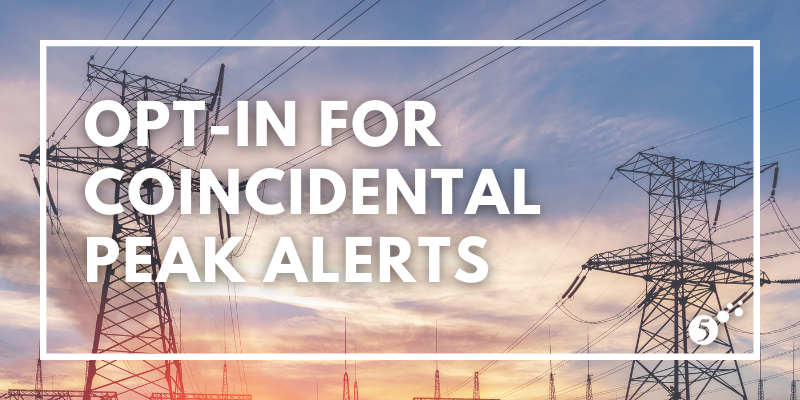On behalf of the team at 5, I am pleased to forward our September market letter. If you had any doubts that the energy transition is happening, recent events in Texas and New York confirm that the answer is yes. As discussed below, these states have very different approaches to energy regulation, and both have struggled to incorporate intermittent resources in the energy mix. For clients in Texas, New York, or any other deregulated market, planning for the challenges of the energy transition, including increased regulatory risk, should be a key component of your energy management strategy.
14 min read
September 2023 - Energy Market Letter
By Jon Moore on September 18, 2023
Topics: Markets Natural Gas NYISO ERCOT Sustainability Newsletters Education Renewables
4 min read
Choosing the Best Term Length for Your Electricity Contract
By 5 on September 18, 2023
Topics: Markets PJM NYISO ERCOT
4 min read
Mid-Summer Market Update: ERCOT, PJM & NYISO
By 5 on July 17, 2023
Given that we are halfway through July, we thought it would be appropriate to provide an update on how major power markets have performed as they relate to each ISO’s coincident peak demand management program.
So far, both weather and demand on the PJM and NYISO grids have been mild compared to recent summers and average summer temperatures. The mean temperature, compared to the average over the last thirty, fourteen, and seven days for the period ending July 13, is shown in Figures 1, 2, and 3 below. These charts show that summer has not really arrived in the middle of the country and that temperatures in the Northeast are only 2º to 3º F above the average.
Topics: Markets PJM NYISO ERCOT Demand Response Resiliency
1 min read
Webinar Recording: ERCOT - This Summer and Beyond Strategy
By 5 on June 2, 2023
Topics: Markets ERCOT Videos Education
4 min read
Coincidental Peak Alerts 2024
By 5 on May 22, 2023
Topics: Markets PJM NYISO ERCOT Demand Response Resiliency
3 min read
Summer Reserve Margin Forecasts
By 5 on May 22, 2023
Early this month, ERCOT released the Seasonal Assessment of Resource Adequacy (SARA) report detailing market conditions as they exist going into the summer of 2023. This report takes into consideration the power output from all current, new, and planned generation that will be available comparing it to the forecasted peak load.
On the same day that ERCOT released the SARA report, the Chairman of the Public Utility Commission of Texas (PUCT), Peter Lake, released the following statement “Data shows, for the first time, that the peak demand for electricity this summer will exceed the amount we can generate from on-demand, dispatchable power." While the initial shock of these words is quite alarming and was quickly picked up by regional news agencies, we believe ERCOT is still better off this summer than last, and that the evolution of the grid to larger and larger percentages of renewable generation is not a new story. And while the statement of the Chairman is not technically false, it is somewhat misleading. Here is more of the whole story.
Figure 1 below is a summary of the report’s findings, demonstrating the load forecast scenarios on the left and a breakdown of the generation by type on the right, rated for this and last year’s summer capacity (the expected generation capacity during peak hours) as well as the current nameplate capacity (theoretical maximum output). Lastly, the reserve margin is a measure of the difference between the summer capacity and the maximum forecasted peak in the summer season.
Topics: Markets ERCOT
2 min read
Texas Court Invalidates PUC's Decision on Winter Storm Uri Electricity Prices
By 5 on April 17, 2023
On March 17, 2023, the Texas Court of Appeals added significant uncertainty to the state’s electricity market. The Court sided with Luminant in their ruling that the Texas Public Utility Commission’s (PUC) decision on February 15, 2021 and February 16, 2021 (in the middle of Winter Storm Uri) to unilaterally set the market price at the cap ($9,000 per MWh) was invalid. The Court’s decision creates unprecedented uncertainty in the electricity market and could lead to ERCOT resettling Real-time Settlement Point Prices for multiple days during that week because of the PUC’s order.
This case takes us back to Winter Storm Uri, which devastated Texas in February 2021. The storm caused a significant portion of the generation fleet (both natural gas and renewables) to fail. Without sufficient generation, ERCOT was forced to institute widespread outages to avoid a total grid collapse. The widespread outages reduced demand for electricity, and as result, the energy market started clearing well below the $9,000 per MWh cap.
On February 15, 2021, the PUC, after a short hearing, unilaterally determined that the market price must artificially be set at the cap in the event of widespread forced outages. This increased market prices from around $1,200/MWh to $9,000/MWh (see Figure 1). On the next day, the PUC met again, and effectively confirmed its earlier ruling. Those orders on February 15th and 16th, dramatically increased electricity market prices until the energy supply shortage ended on February 19th.
Topics: Markets ERCOT
3 min read
Lubbock All Set for Electricity Deregulation
By 5 on March 2, 2023
Why did Lubbock vote to deregulate the LP&L service territory?
Lubbock, Texas, the 11th most populous city in the state and birthplace of rock ‘n roll legend Buddy Holly, is becoming a deregulated electric territory. On February 22, 2022, the Lubbock City Council cast a unanimous vote in favor of electric deregulation, the final hurdle to transition Lubbock Power and Light (LP&L) to competitive retail electric service. LP&L hopes to fully transition service by mid to late 2023. Lubbock will now join over 7 million Texas electric consumers with the right to choose their own retail provider.
Topics: Markets ERCOT
12 min read
February 2023 - Energy Market Letter
By Jon Moore on February 22, 2023
On behalf of the team at 5, I am pleased to forward our February market letter. This letter discusses: (i) the recent fall in natural gas prices and increasing natural gas price volatility, (ii) the 188th Congress and the potential impact of the election on Federal and State energy policy in 2023, and (iii) how the electricity grid held up during Winter Storm Elliott and the February cold snap.









